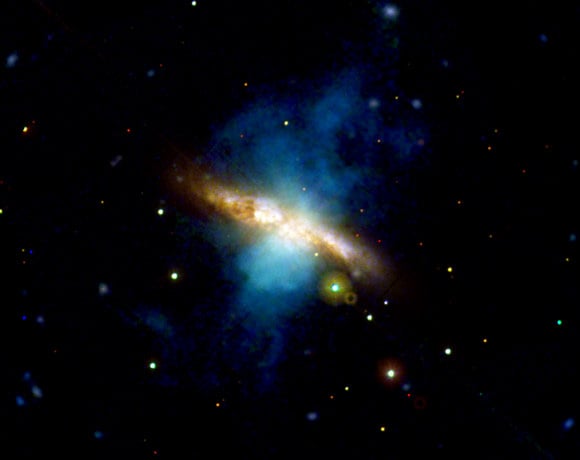ESA's space-borne X-ray observatory, XMM-Newton, has carried out an exclusive, 50-plus-hour observation of the starburst galaxy Messier 82, for the '100 Hours of Astronomy' cornerstone project for the International Year of Astronomy 2009.
This first image shows bright knots in the plane of the galaxy, indicating a region of intense star formation, and emerging plumes of supergalactic winds glowing in X-rays.
XMM-Newton has been studying the sky in X-ray, optical and ultraviolet wavelengths simultaneously, since its launch in December 1999.
Messier 82 has several names including: M82, the Cigar Galaxy and NGC 3034. Located in the constellation Ursa Major at a distance of about 12 million light-years, it is the nearest and one of the most active starburst galaxies, meaning it shows an exceptionally high rate of star formation.
M82 is interacting gravitationally with its neighbour, the spiral galaxy Messier 81, which is probably the cause for the violent starburst activity in the region around its center.
This second image of Messier 82, compiled from observations in the optical and infrared, shows the very bright starry disc of the galaxy with striking dust lanes.
Source:
ESA
. More images, including a downloadable poster, are
here
. 100 Hours of Astronomy ended on Sunday, but the
website
still has loads of fun information. The
International Year of Astronomy 2009
celebration is, of course, ongoing!
 Universe Today
Universe Today

